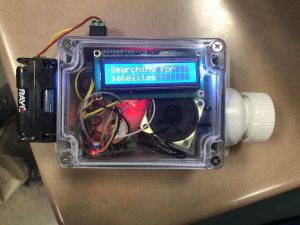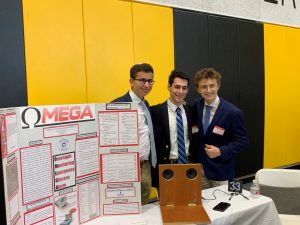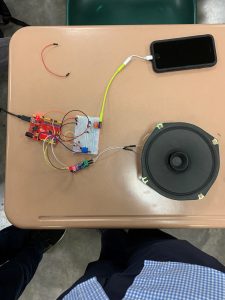2020 TSA Regional Competition submissions:
The Yavneh engineering website
The one you are on right now! Isn’t it great?
Photo submission by Alec (Alum)
Pen by Raphael
Past Abstracts for CIJE Projects:
2019: CIJE Competition in Los Angeles, May 30
Forget-Me-Not: Ben, Ephraim, Amir
According to a 2002 government study, about 1.3 million children get lost every year. If they had a tracking device or if a passerby knew they were lost, they would be able to be returned home. This is why we developed the Forget-Me-Not, which is a device worn in a pocket or on a belt, to alert others that the wearer is lost and needs to be returned home. The person’s guardian sets up the device by clicking a button at the origin point to establish a “virtual fence”, which is a set distance from the origin point. If crossed by the wearer, a speaker is activated to produce an alarm. This alarm alerts and attracts others to the lost wearer who can then be brought within the “fence”. The device determines the distance from the origin point by using a GPS receiver that sends coordinates to an Arduino, which calculates the distance from the origin location. When outside the fence, an LCD will display how far North/South and East/West the lost person has to go to re-enter the virtual fence. While there are other devices that serve a similar purpose, they usually send an alert to an outside source, like a parent or guardian. This device is used to alert people nearby, allowing for more immediate help.

OMEGA: Raphi, Eli, Paul
In order to stay alive, diabetics must be aware of their blood glucose levels (BGL). The typical blood glucose range advised by doctors is between 80-150 mg/dL. Ideally, diabetics monitor their BGLs using a CGM or continuous glucose monitor. CGM has a small cannula under the skin in the interstitial fluid. This device reads the diabetic’s BGL and sends that data to a phone. If the BGL is too low or high, an alarm will go off. Typically the alarm alerts the diabetic, allowing them to react to the emergency. When a diabetic is a heavy sleeper, their blood glucose alarm may not wake them up, which can be deadly. Our project is designed to aid those diabetics who cannot wake up to prevent them from dying. We have done this by creating a machine that can read the electrical signals given off by the phone alarm. If an alarm goes off, the signal is sent to the Arduino via AUX cable. The code looks for the electrical signal of a phone alarm, and if one is seen, it will play an alarm saying wake up twice, and then 3 high pitched randomized tones. Once the user does wake up, all they have to do is press a button to reset the alarm, so that it will keep listening for another blood glucose alert. The speaker system is part of a headboard that can be easily attached to a bed.



